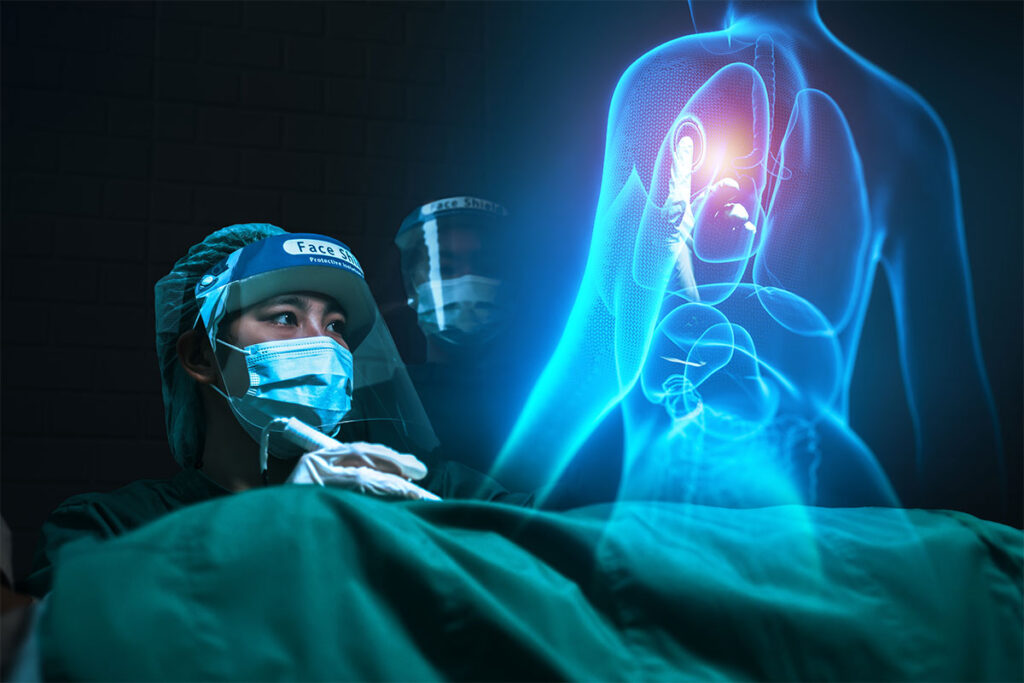
There is an increasing recognition in health that indicators of clinical deterioration such as abnormal vital signs are being missed. Evidence also suggests a lack of organization and knowledge regarding how to manage clinical deterioration. Studies show that 85% of all in-hospital cardiac arrests are preceded by undetected signs of deterioration.
Delayed recognition of a patient’s condition can result in increased deterioration and may result in a transfer to the ICU and could double the cost of medical treatment.
The need for highly skilled and competent nurses to recognize these conditions are crucial in an environment with no ED or ICU. Early detection and escalation are critical to either manage the symptoms early to prevent the need for transfer to an ICU. Also, in cases where patients require transfer to acute care, early detection will ensure a better outcome.
“Management of a patient’s care following an error in treatment is an essential component of ensuring safe patient care, “ says our Nurse Educator. “Our goal is to have safe patient care and toward continuous improvement, growth and learning.”
Simulation has been identified as a critical strategy to improve patient safety, reduce the length of stay, and ensure improved access to care.
The Role of Simulation
The role of simulation in improving patient safety is a frequently discussed topic in the literature. Although simulation is frequently used in education institutions, evidence exists regarding the need for greater uptake in all kinds of clinical practice settings.
A simulation-based educational model has demonstrated significant increases in health care professionals’ competency concerning critical action elements of assessment, reporting, managing patient deterioration and post-intervention following a critical safety event.
The technology is changing constantly and health care that depends a lot on technology absolutely needs to keep pace and maintain our knowledge. For the sake of the patients.
Simulation training provides hands-on training to improve communication among care teams.
The need for clear communication between professionals, patients and families is cited as one of the main contributing factors in preventing errors.
One of the key benefits is that this type of hands on learning allows us to share best practices with each other and to stay ahead of the curve.
There is a need for a safe space for staff to learn about techniques and updated scenarios that the staff may encounter. This was evident during the COVID-19 pandemic when it was necessary to practice eventualities that could come from a patient with the virus.
Up to 90% of active learning comes from a hands on experience versus reading about a technique or viewing the procedure on a video. Growth happens during this process with the peer to peer sharing, the ability to practice on new equipment and the debriefing period.
What is simulation-based learning?
Simulation-based learning is a training system focusing on experiential learning, in which real-life clinical scenarios are presented within a controlled environment.
High-fidelity computerized, interactive manikins integrated with software to replicate human physiological responses such as breathing and pulses allow caregivers to develop their skills in dealing with a full spectrum of clinical scenarios and provide the most authentic patient-caregiver clinical interactions. The high-tech virtual reality simulators replicate specific parts and systems of the human body and are used for simulating procedures and surgery, providing instant performance feedback.
Caregivers practice all types of scenarios, allowing them to rehearse and perfect new, rare, complex and emergency events before being appraised. Simulation-based learning provides an optimal opportunity for the debriefing of the teams to reduce care provider stress and anxiety.
Benefits of Simulated Training at Concordia
A Simulation learning lab at Concordia will provide a state-of-the-art learning environment for all care providers. Urgent Care Physicians, Medical / Nursing Students, Physician and Clinical Assistants, Nurses, Respiratory therapists and others will have the opportunity to detect deterioration, manage cardiac arrests and other emergencies.
Our goal is to ensure continued learning and practice for teams to maintain their skill sets to provide emergency care to patients within a low acuity environment. Most life-threatening events are not predictable, particularly within the surgery. As such, the simulation lab will ensure continued training and hands-on practice are available at all times.
The emphasis within the training sessions involves leadership, teamwork and communicates the opportunity to enhance the medical knowledge required to manage an unanticipated, life-threatening event in a less threatening environment.

We are thrilled to have welcomed a
$300,000
pledge and donation to set up the new Simulated Learning Lab located in the Concordia Hospital. In order to expand the program and fund the operations of this critical program please click here.